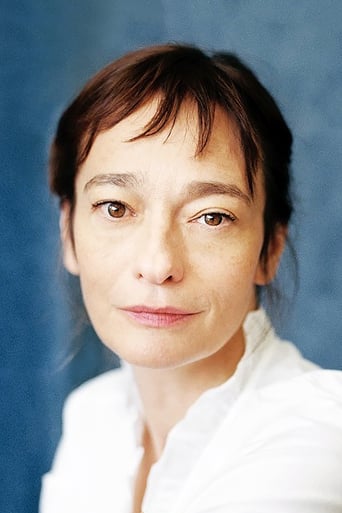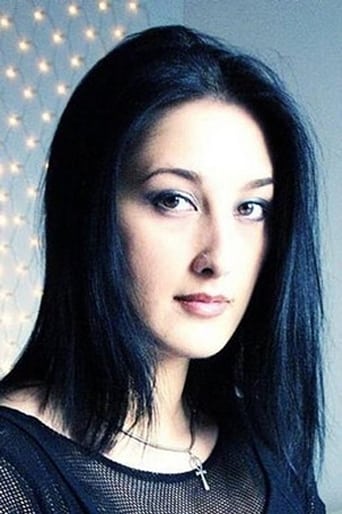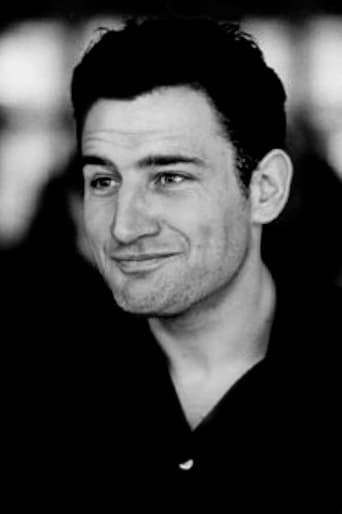Intcatinfo
A Masterpiece!
Derry Herrera
Not sure how, but this is easily one of the best movies all summer. Multiple levels of funny, never takes itself seriously, super colorful, and creative.
Rexanne
It’s sentimental, ridiculously long and only occasionally funny
Candida
It is neither dumb nor smart enough to be fun, and spends way too much time with its boring human characters.
chaos-rampant
This was recommended to me as a similar thing to Austrian serial killer film Angst, as subversive horror constructed by the serial eye. Horror that is the unmediated present moment with none of the fictions around it that we use to justify watching.Now Angst operated a two-fold camera: up close to violence and far away from it as possible, allowing human madness within the framework of an abstract world. It was a powerful exercise for this reason: this second camera was pivotally ours. How did we handle this view away from violence? Did it provide relief or was it merely a distraction that got in the way of our enjoyment? This goes the extra mile. It eliminates the latter type of camera, the bird's eye view, that is in essence the spiritual eye that can see far and wide and encompass the world, in doing so eliminates clarity, coherence, sense, centeredness, and solely invests itself in the internal camera intimately capturing motions and landscapes of deranged soul. The effect is uncanny: a patchwork of frantic, jittery, blurred, incomplete, half-visible glimpses of a mind struggling no longer to make sense - as we did in Angst - but to simply exist inside the world it frames and transforms images from.Naturally the film is French, and can be traced all the way back to the kaleidoscopic motions of L'Herbier and Epstein, back to the 20's when film was still something you engineered for the eye. Photogenie, as Epstein was fond of calling the effect, a world in flux.The film would be worth watching for just this, justified for just the roaming vision. But we have another effect on top of this, more explicitly self-referential about what it means to want to see. Our man is a puppeteer, the opening scene is presumably one of his shows, coated in darkness, before an audience of screaming children. Then he goes on his raping spree, attracted to sex that invites a prying gaze - one is a stripper, as far as I could make out. The whole is threaded around the Tour of France, a big cycling event that lasts for three weeks. He orbits for some time around people wanting to see, in a sense lusting for spectacle.We don't though, we don't see. For the most part the film unfolds across twilight hour, our sight cramped by the night. We keep watching though. Worse yet, we keep trying to make out the show's sordid details.Two soliloquies bookend the claustrophobic tunnel vision, both of them memories. One layers the film as sudden, frightful pain from childhood. The other as another random turn in the random turns of a meaningless world where lovers impulsively check into a hotel in Paris, visiting the city of lights for the first time, and eleven days later the man is simply dead.
mwold
Nearly pointless but artistic exercise in bad filmmaking. Little character development, little plot, little dialog, and little suspense make for a boring movie. Though some of the ideas behind the story hold much potential, and some of the visuals are quite stunning in a freshmen experimental kind of way, the execution is amateurish and artistically over indulgent. Additionally, as incoherent as the plot is, it's also highly unrealistic (not in a good way) and fairly stupid. What's worse, you know how clever and arty the director thought he was being when he orchestrated this mess, even having the audacity to use 'Bela Lugosi's Dead' in one scene. Totally pretentious, totally ridiculous. Not recommended.
Scarecrow-88
I'm pretty sure director Philippe Grandrieux's SOMBRE was supreme festival fodder during it's initial release, but to me it was an aggravating and trivial exercise to sit through. Like other *important* modern filmmakers, Grandrieux adopts a camera style that lenses his subjects often out of focus with the characters at times(..more like most of the time)on the edges of the frame, rarely in a position where we can see them with clarity. This choice is probably applauded by critics and those who appreciate a particular vision(..perhaps mimicking the distorted, warped view of the world in regards to the particular characters features prominently in the film)shown in this film, but I found Grandrieux's style frustrating and difficult. I'd actually prefer to see characters and Philippe Grandrieux's camera always moves, following the actors/actresses around, often jerking and shaking. I consider myself a patient viewer who has tolerated this style for a great deal of time, but it's begun to weigh on my nerves and what's even more tiresome about Philippe Grandrieux's direction here is that his performers, especially Elina Löwensohn as the psychologically troubled and confused Claire in love with volatile, quietly menacing serial killer Jean(Marc Barbé), are very good and deserve to have their work seen clearly without a camera unable to capture every nuance and aching truth presented for the viewer. Sure, if you are attentive enough and completely focus, the viewer is able to catch the performances when the camera stays still long enough.The film somewhat focuses on a serial killer, Jean, driving through the French countryside as the Tour de France is in full swing, picking up loose women working the streets, clubs and nudie rooms, strangling and suffocating them, leaving their carcasses often in rural areas along river fronts and fields(..or wherever he happens to engage in rough sex, often humiliating them before sticking his fingers down their throat as he initiates his ritual of grabbing their throats, squeezing tightly, covering their mouths pressing the air waves tightly so that oxygen can not be successfully and sufficiently accessed). Jean meets Claire, a very depressed virgin, a beautiful wallflower who seems detached from the world around her, bored and alone. Her free-spirited sister, Christine(Géraldine Voillat)is her polar opposite, actually attempting to seduce Jean, and is an open and vocal woman who has engaged in sexual activity, quite a blunt and frank individual..she's also a model for the type of woman Jean likes to ravage and kill. Once the three start on a journey together, Jean can not control the beast and almost kills Christine before Claire thankfully intervenes. Unable to break free from Jean's grasp, Claire will submit to his will in that Christine can survive without dire harm. But, will Claire be able to survive? Jean will force Claire into the night, having her indulge in drink and dance, but his victim becomes an all too willing subject with unpredictable fireworks sparking between these two troubled souls.Definitely an ultra-dark character study which features several unpleasant scenes where Jean works over victims before killing them, but the director's haphazard camera doesn't capture these traumatic attacks with any clarity(..there's enough to make those with a faint heart squirm a bit, though and the grunts, screams and pain of the victims certainly convey to the viewer what is happening to them). Löwensohn hits it out of the ball park with a very demanding and complex performance, her character's not an easy nut to crack..one grimaces at her decisions to associate with Jean when she knows the kind of person he truly is, yet embarks on an affair with him anyway risking her life in the process. Barbé shows us the torment he's facing, the monster he can not tame. His face conveys the agony that always pushes him to commit the deeds he does towards "corrupt" women who feed that anguish and desire. This film might test viewers who like a film to remain on the story of these characters because the director likes to show the trivialities of their lives, not concerned with moving in a linear path, freely allowing these people to exist the way they might in real life. Shots of the French countryside, which are often dump sites of the killer, are haunting..as are scenes of the waving water before Jean makes his move to dive in with a goal of possibly killing Christine. The director also opts for minimal music(..the sound of a car on the road with other sounds drowned out;a type of droning as the killer moves to and fro, from one place to another), instead using natural sounds of the environment with which the characters exist, quite effective.
fertilecelluloid
Jean (Marc Barbe) is driven by a desire to annihilate women. He strangles several in this protracted journey into his personal hell. Philippe Grandrieux, who made the boring "La Vie Nouvelle", manages to create a modestly concrete narrative here. It is an experimental piece. It may work for some. It didn't work for me. The director often shoots his subjects out of focus for reasons that remain unclear. The editing is adequate, the dialog is sketchy, the performances have a disconnected quality, though they don't lack realism. Ideas and themes are tossed around, but nothing is addressed directly. The sound mix is haunting and some of the driving sequences have the quality of a very bad dream. "Sombre" is a film of personal indulgences. I found the pace interminable and felt relieved that my suffering was over when the credits rolled.




